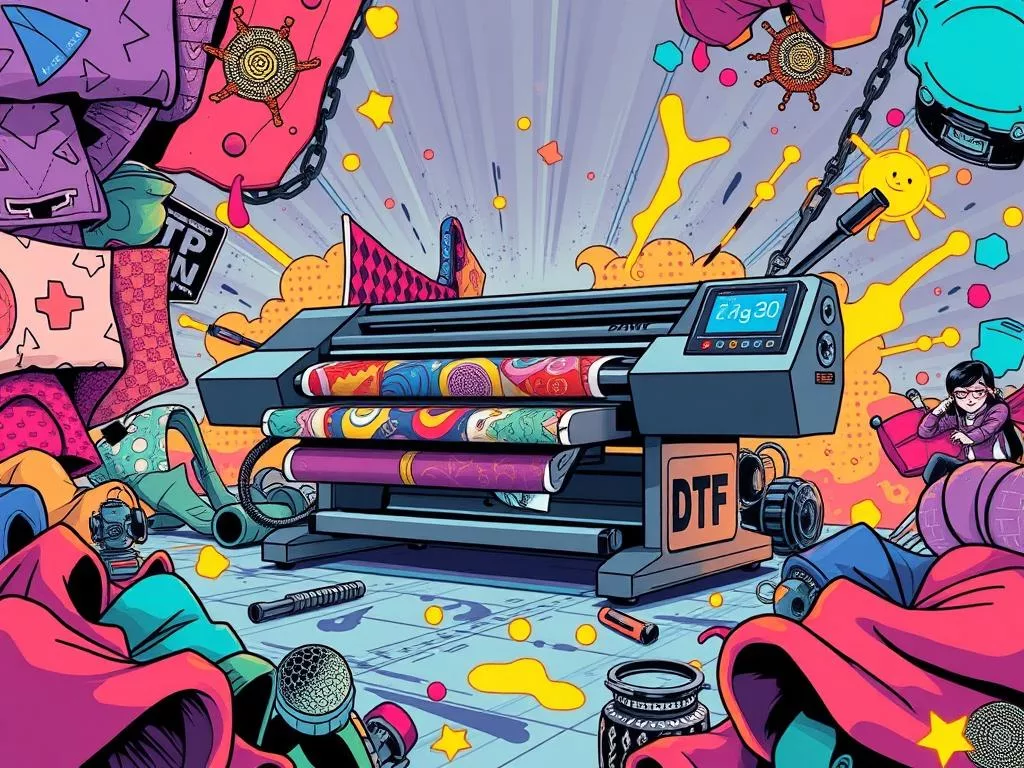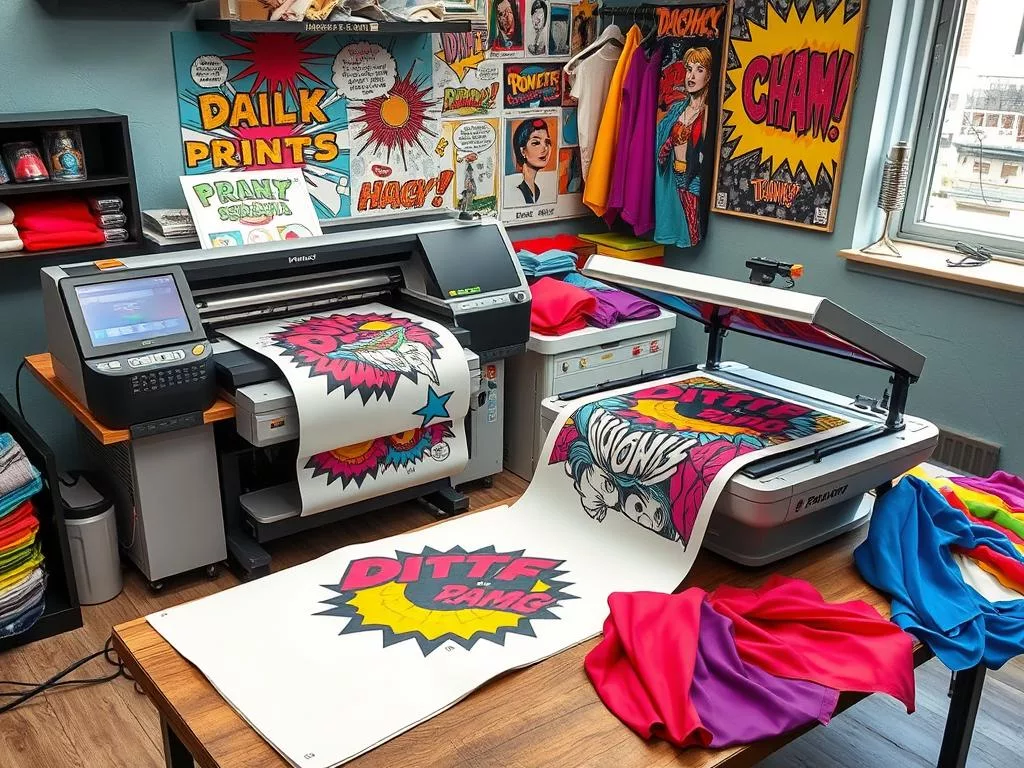Welcome to the world of advanced digital transfers! In this guide, we’ll explore the latest techniques and advancements in DTF Printing. We’ll see how digital fabric printing is changing the game, making prints better and faster. We’ll also look at the growing need for Custom Fabric Transfers in fashion and more.
This journey starts with the amazing power of digital transfer tech. Whether you’re new or experienced, this guide will entertain and teach you. It’s packed with useful tips and fun facts about digital printing. So, get ready to learn more about this exciting field.
Keep an eye out for more chapters. We’ll cover the basics of DTF printing and the pros and cons of different methods. Let’s start this fun and informative journey into modern digital printing!
Guide to wise and wacky digital transfers continue to advance
The world of digital transfers is changing fast. Digital Transfer Innovations are making printing better than ever. The latest DTF Technology is a big step forward, making fabric printing vibrant and long-lasting.

- Ink Formula Enhancements: New inks don’t crack or fade, keeping prints looking great for a long time.
- Transfer Process Refinements: Modern methods fix old problems, making printing faster and more reliable.
- Specialization in Fabrics: DTF printers now work better with different fabrics, improving print quality.
This change is all about keeping up with the market’s fast pace. Advanced DTF Solutions offer top-notch quality for any fabric. It’s a big leap from general-use systems to specialized ones that boost efficiency and quality.
The evolution in fabric printing isn’t just about new machines. It also includes better software and workflow improvements. This makes it easier for professionals to meet today’s high standards.
Adding these new technologies to your workflow can make things more efficient and better quality. Advanced DTF Solutions help use resources better and cut down on waste.
The journey of Wise and Wacky Digital Transfers shows the drive for excellence in fabric printing. This wave of Digital Transfer Innovations promises a future where prints are both vibrant and durable. Adopting these technologies will lead to better performance and happier customers.
Essentials of DTF Printing
Direct-to-Film (DTF) printing is both efficient and versatile. It starts with adapting standard inkjet printers for DTF Printer Conversion. This change lets them use special DTF Ink and Film. It’s key for quality results at lower costs.
The DTF Printing Process involves converting an inkjet printer. A Continuous Ink Supply System (CISS) is used for smooth ink flow. Choosing the right DTF Ink and Film is vital for vibrant, lasting prints.

The film printing process prints designs on film with the DTF printer. The film is then placed on fabric or other materials and pressed with a heat press. This step ensures the image is transferred well, resulting in high-quality prints.
Maintenance is essential. Cleaning print heads and replacing worn parts keeps equipment running well. Regular maintenance prevents clogs and other problems.
DTF printing can save over 55% compared to other methods. It’s fast, with average shipping times of just 2.2 days. Programs like Apliiq VIP offer more savings, making it even more cost-effective.
DTF Printer Conversion can be a big change. Businesses like Howard’s have seen great improvements. His story shows how DTF printing can transform a business.
Understanding DTF Basics and the printing process reveals its benefits. It offers cost savings and quality results. With the right ink, film, and maintenance, businesses can thrive with DTF printing.
Benefits and Drawbacks of Various Digital Transfer Methods
When we compare DTF Printing with other digital transfer methods, we see both good and bad sides. DTF printing is great because it doesn’t need screens or a lot of setup. This makes it perfect for small to medium print jobs. It’s quick and affordable, showing off the DTF Printing Advantages.
But, traditional methods like screen printing have their own strengths. For big print jobs, screen printing is often cheaper. Screen Printing vs. DTF shows that screen printing is durable and brings out bright colors.
Looking at the Digital Printing Disadvantages, DTF printing has a high setup cost and needs tech skills. This might stop small businesses without the money or know-how. On the other hand, screen printing costs a lot at first but saves money for big orders.
Knowing these details helps businesses make smart choices. Whether to choose screen printing or DTF depends on what they need, how much they print, and their resources. By weighing the DTF Printing Advantages against the Digital Printing Disadvantages, businesses can pick the best method for their needs.
Choosing the Right Printer for DTF Printing
Choosing the right printer is key for success in Direct to Film (DTF) printing. The DTF Printer Selection Guide points out important factors. These include printer resolution, ink compatibility, and durability.
The Epson EcoTank series is a top pick for its high-quality DTF prints. It’s also easy to convert, making it a favorite among professionals.
When picking the best DTF Printers, think about your needs. Whether you’re starting out or growing, choose based on your printing volume. For detailed designs, high-end models are better. For small jobs, entry-level ones are enough.
Printers that work with different fabrics are versatile and meet customer needs. This flexibility is a big plus.
Budget is also important. While top printers cost more upfront, Epson’s scalable options are durable and easy to maintain. With discounts and VIP memberships, you can save a lot. In the long run, investing in quality and efficiency pays off.

